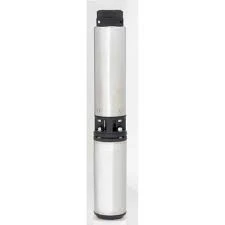Dec . 19, 2024 14:11 Back to list
Submersible Pump Maintenance and Repair Guide for Optimal Performance and Longevity
Understanding Submersible Pump Repair A Comprehensive Guide
Submersible pumps are vital components in many industries, ranging from agriculture to municipal wastewater management. These pumps are designed to be submerged in fluids, allowing them to efficiently move water or other liquids from one location to another. However, like any mechanical equipment, submersible pumps can experience failures and require repairs. Understanding the common issues that arise and the repair process can save time, money, and frustration.
Common Issues with Submersible Pumps
1. Overheating One of the most frequent problems encountered with submersible pumps is overheating. This can be caused by a lack of proper lubrication, a malfunctioning motor, or prolonged operation without adequate cooling. Overheating can lead to severe damage, necessitating extensive repairs.
2. Clogging Submersible pumps, especially those used in sewage or drainage applications, can become clogged with debris, sediment, or other solid materials. This clogging not only reduces the pump’s efficiency but can also lead to mechanical failure if not addressed promptly.
3. Electrical Failures As with any electrically powered device, submersible pumps can suffer from electrical issues, such as short circuits, grounding problems, or damaged wires. These issues often require specialized knowledge to diagnose and repair.
4. Worn-out Components Over time, various components of the pump, such as seals, bearings, and impellers, can wear out. Regular maintenance can help identify these issues before they become serious problems.
Repair Process
Repairing a submersible pump requires careful analysis and a systematic approach. Here’s a general outline of the repair process
submersible pump repair

1. Diagnosis Begin by identifying the symptoms of the pump's failure. This may involve checking the operational logs, inspecting the pump physically, and testing its electrical components. A multimeter can be used to check for continuity and voltage irregularities.
2. Disassembly Once the problem has been pinpointed, the pump must be disassembled carefully. It’s essential to take detailed notes or pictures during this process to assist in reassembly. Components, such as the motor and impeller, need to be removed to gain access to internal parts.
3. Inspection Inspect all components for signs of wear, damage, or corrosion. Common culprits include worn bearings, damaged seals, or broken impeller blades. If the electric motor shows signs of damage, it may require professional testing or replacement.
4. Cleaning Often, a thorough cleaning of the pump and its components is necessary. This helps remove any debris or sediment that may be causing clogs or affecting performance. Use appropriate cleaning agents and methods to avoid damaging fragile parts.
5. Replacement of Parts After identifying any damaged components, replace them with new, high-quality parts. It’s crucial to match the specifications to avoid future issues. Be sure to install seals and gaskets properly to prevent leaks.
6. Reassembly and Testing Once repairs have been made, reassemble the pump carefully. After ensuring everything is correctly in place, test the pump in a controlled environment to verify that it operates efficiently without leaks or unusual noises.
7. Regular Maintenance To prevent future issues, establish a regular maintenance schedule. This may include routine inspections, cleaning, and timely replacement of worn parts. Keeping a log of maintenance activities can help track the pump’s performance over time.
Conclusion
Submersible pump repair can be a straightforward process if approached methodically. By understanding the common issues and adhering to a structured repair process, operators can extend the life of their pumps and ensure operational efficiency. Regular maintenance and vigilant monitoring can mitigate many problems before they escalate, ultimately saving time and resources. When in doubt, consulting with or hiring a professional can provide additional assurance that repairs are performed correctly and safely.
-
Submersible Water Pump: The Efficient 'Power Pioneer' of the Underwater World
NewsJul.01,2025
-
Submersible Pond Pump: The Hidden Guardian of Water Landscape Ecology
NewsJul.01,2025
-
Stainless Well Pump: A Reliable and Durable Pumping Main Force
NewsJul.01,2025
-
Stainless Steel Submersible Pump: An Efficient and Versatile Tool for Underwater Operations
NewsJul.01,2025
-
Deep Well Submersible Pump: An Efficient 'Sucker' of Groundwater Sources
NewsJul.01,2025
-
Deep Water Well Pump: An Efficient 'Sucker' of Groundwater Sources
NewsJul.01,2025
-
 Submersible Water Pump: The Efficient 'Power Pioneer' of the Underwater WorldIn the field of hydraulic equipment, the Submersible Water Pump has become the core equipment for underwater operations and water resource transportation due to its unique design and excellent performance.Detail
Submersible Water Pump: The Efficient 'Power Pioneer' of the Underwater WorldIn the field of hydraulic equipment, the Submersible Water Pump has become the core equipment for underwater operations and water resource transportation due to its unique design and excellent performance.Detail -
 Submersible Pond Pump: The Hidden Guardian of Water Landscape EcologyIn courtyard landscapes, ecological ponds, and even small-scale water conservancy projects, there is a silent yet indispensable equipment - the Submersible Pond Pump.Detail
Submersible Pond Pump: The Hidden Guardian of Water Landscape EcologyIn courtyard landscapes, ecological ponds, and even small-scale water conservancy projects, there is a silent yet indispensable equipment - the Submersible Pond Pump.Detail -
 Stainless Well Pump: A Reliable and Durable Pumping Main ForceIn the field of water resource transportation, Stainless Well Pump has become the core equipment for various pumping scenarios with its excellent performance and reliable quality.Detail
Stainless Well Pump: A Reliable and Durable Pumping Main ForceIn the field of water resource transportation, Stainless Well Pump has become the core equipment for various pumping scenarios with its excellent performance and reliable quality.Detail
